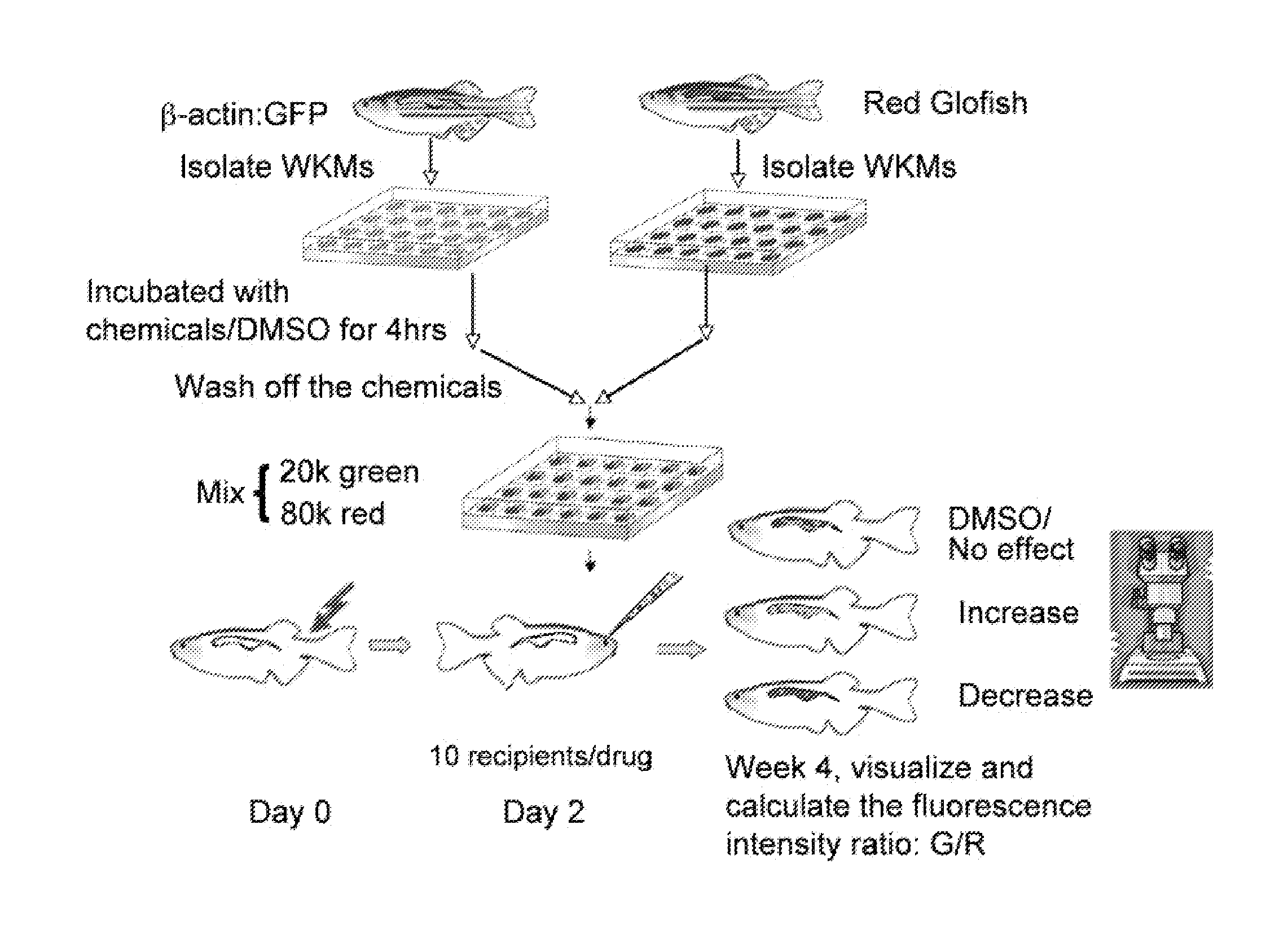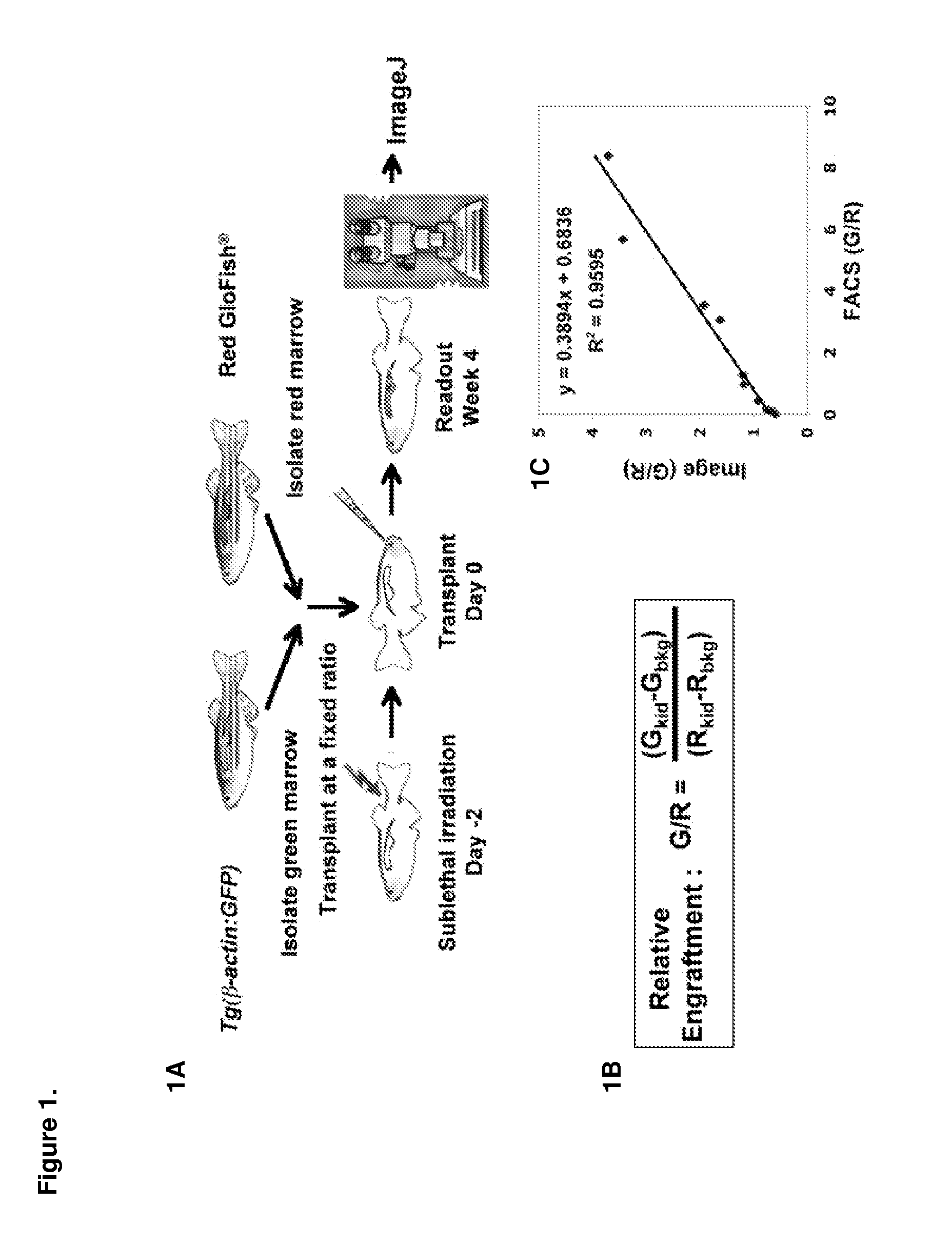Methods for enhancing hematopoietic stem/progenitor cell engraftment
- Summary
- Abstract
- Description
- Claims
- Application Information
AI Technical Summary
Benefits of technology
Problems solved by technology
Method used
Image
Examples
example 1
Zebrafish Competitive Transplant Assay Development
[0130]Described herein is an adult zebrafish competitive marrow transplantation assay, which can be used to directly visualize and quantify engraftment, and measure the migration, self-renewal, proliferation and differentiation properties of hematopoietic stem cells (HSCs) in zebrafish. A chemical screen with the zebrafish WKM competitive transplantation model accelerates the discovery of novel pathways and signaling networks regulating these properties of HSCs. The zebrafish embryonic and adult hematopoietic models also help to characterize and understand the mechanism of the pathways. Last but not least, compared with traditional genetic methods, chemical genetic approaches provide not only pathways relevant to the biological process, but also small molecules as the starting point of drug development to increase the HSC engraftment capability and improve the engraftment efficiency of human HSC transplantation.
[0131]A double-color l...
example 2
Exemplary Compounds that Enhance Engraftment
[0142]240 compounds have been screened using the Zebrafish competitive transplant assay described herein above. Twenty compounds showed a positive effect on engraftment in the primary screen. Ten out the twenty compounds have been repeated in the second round of the screen. Farnesyl compounds were found to have a positive effect on hematopoietic stem and / or progenitor cell engraftment as shown in Table 1:
TABLE 1Exemplary farnesyl compounds that enhance engraftment in a zebrafish modelcompound nameconc.mechanismPvalueS-Farnesyl-L-cysteine 5 mMBioactive lipids MDR 0.04 methyl ester (FCME)ATPase activatorFarnesylthioacetic 5 mMBioactive lipids 0.046acid (FTA)Carboxymethylation inhibitor
[0143]Five positive compounds from the Zebrafish screen were further confirmed using a mouse whole bone marrow competitive transplantation assay. 20,000 CD45.1 donor bone marrow cells treated with different compounds at 37° C. for 3 hours, to compete with 200,0...
PUM
| Property | Measurement | Unit |
|---|---|---|
| Molar density | aaaaa | aaaaa |
| Structure | aaaaa | aaaaa |
Abstract
Description
Claims
Application Information
 Login to View More
Login to View More - R&D
- Intellectual Property
- Life Sciences
- Materials
- Tech Scout
- Unparalleled Data Quality
- Higher Quality Content
- 60% Fewer Hallucinations
Browse by: Latest US Patents, China's latest patents, Technical Efficacy Thesaurus, Application Domain, Technology Topic, Popular Technical Reports.
© 2025 PatSnap. All rights reserved.Legal|Privacy policy|Modern Slavery Act Transparency Statement|Sitemap|About US| Contact US: help@patsnap.com



